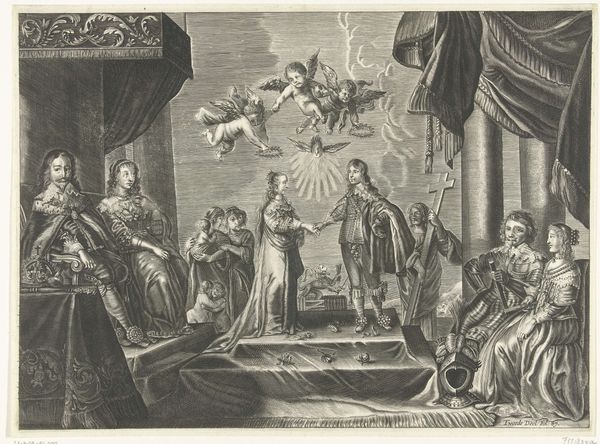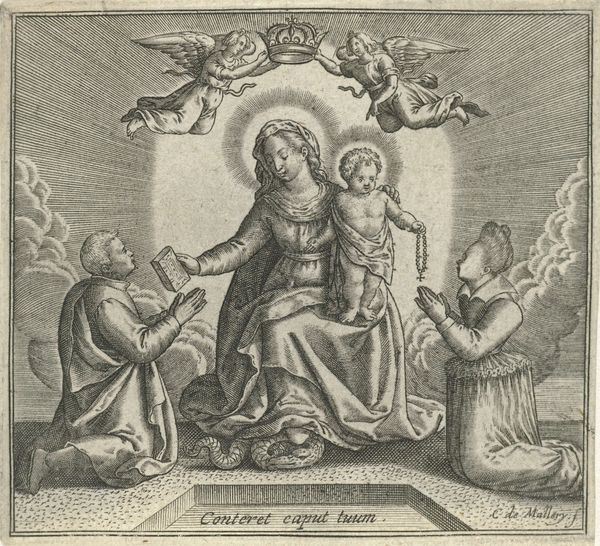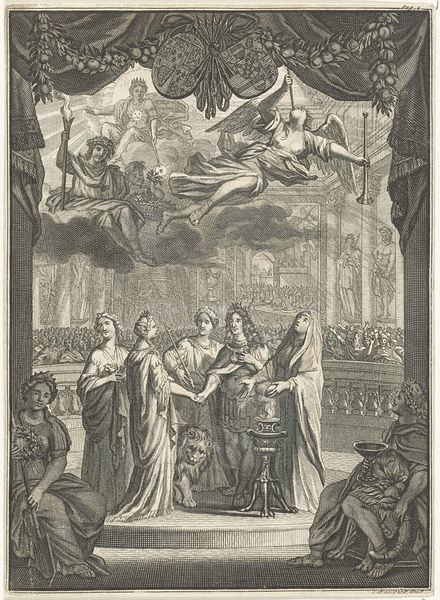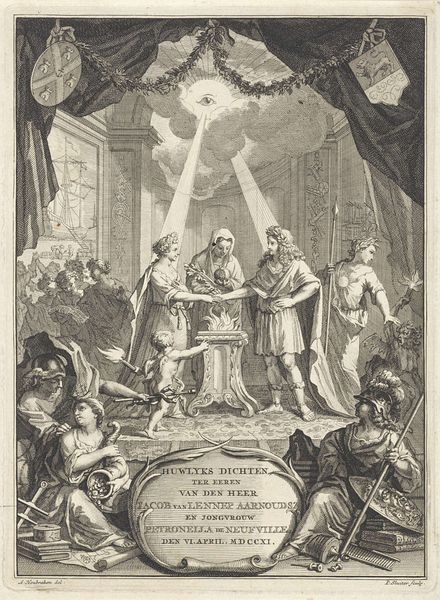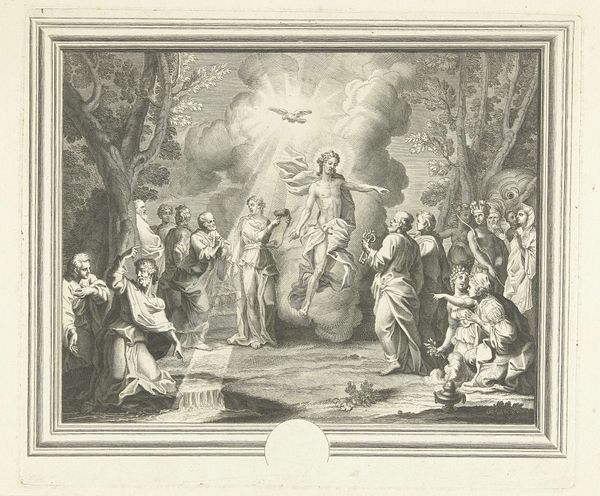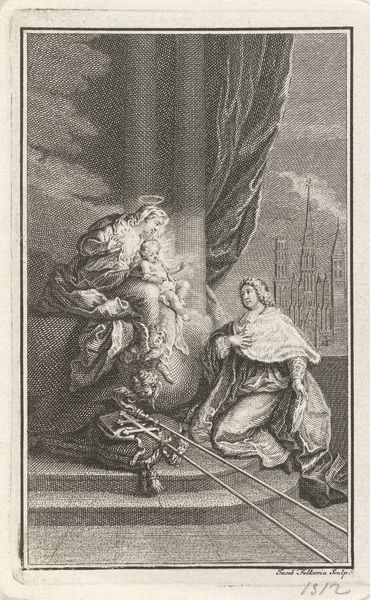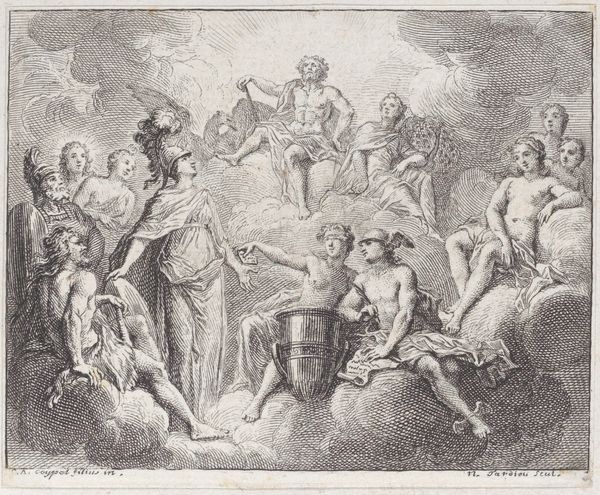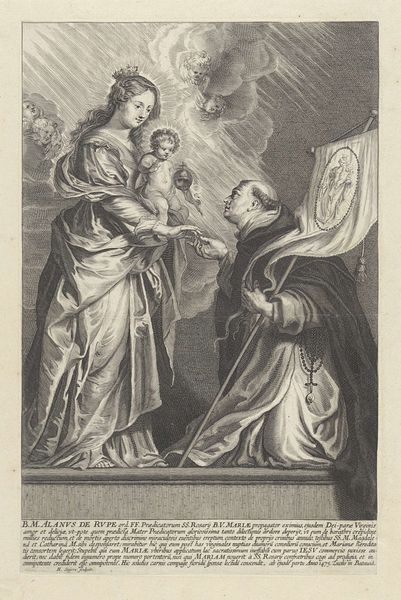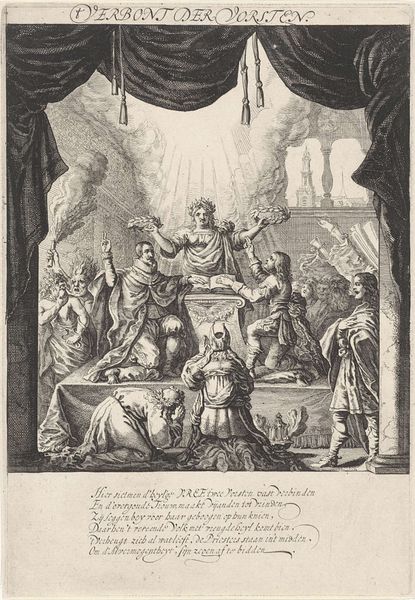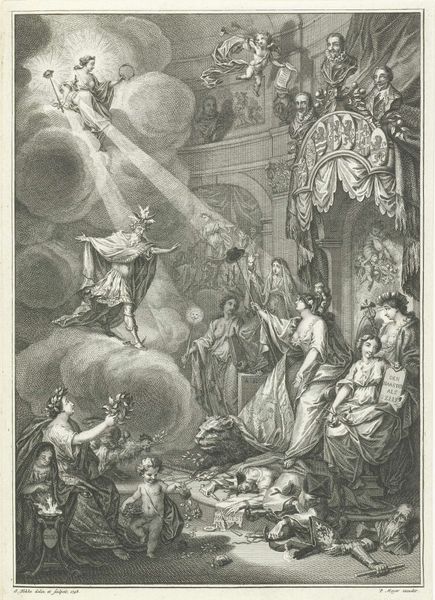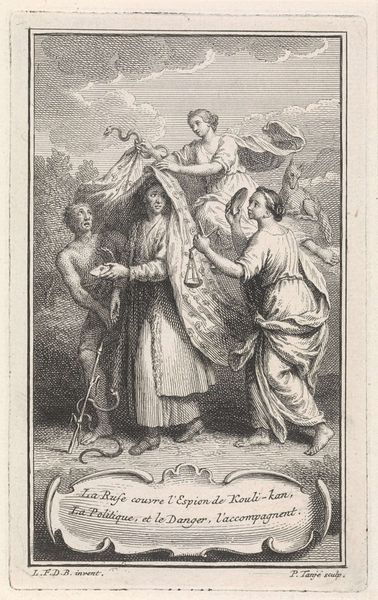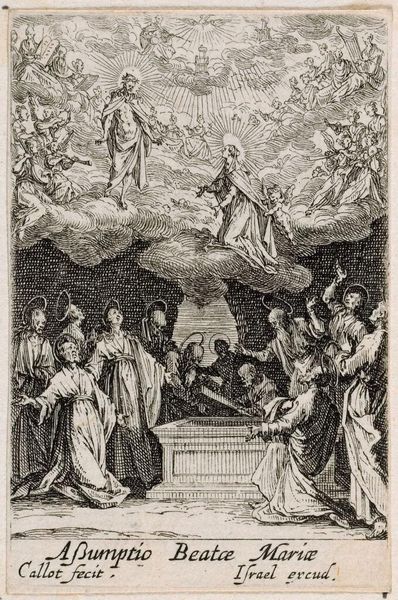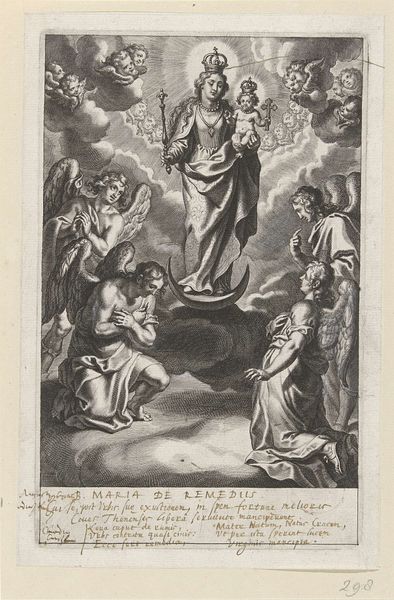
print, engraving
#
allegory
#
baroque
# print
#
old engraving style
#
figuration
#
line
#
history-painting
#
engraving
Dimensions: height 79 mm, width 104 mm
Copyright: Rijks Museum: Open Domain
Curator: This is Jacob Folkema's 1757 engraving, “Liefde en Geloof rond een offerzuil,” which translates to “Love and Faith around an Offering Column." It's currently held in the Rijksmuseum collection. Editor: It’s immediately striking how the density of line work creates an almost ethereal atmosphere. There’s so much detail packed into such a small space. The figures almost seem to float. Curator: Precisely! This print encapsulates the symbolic language prevalent in 18th-century allegorical prints. Observe how the female figures are strategically placed, embodying faith and love while flanking a classical offering column. The dove and the radiant heart above signify divine grace and sincere devotion. But also consider what it meant to portray these virtues through the bodies of women during the enlightenment. Editor: The composition reinforces that hierarchy, doesn't it? Note the strong vertical axis formed by the offering column, bisecting the composition, creating a central focal point around which all other elements are arranged. And how light radiates from a higher source—a triangle symbolizing the divine—drawing the eye upwards and signifying transcendence. Semiotically, these arrangements are meant to evoke the feeling of piety. Curator: And look closer at the socio-political implications—Faith is paired with the Tablets of Law, referencing the established Church, while Love is next to figures near a musical instrument. We should consider if the print advocates for the prevailing socio-religious structures, as well as whether music represented "passions." Also how this piece interacts with shifting notions of womanhood at the time, as female allegories served the function of instructing proper moral and societal values. Editor: Interesting! Focusing solely on the visual, though, I am also fascinated by the formal complexity of the decorative frame and how the engraver balances these delicate forms with bolder lines delineating the human figures. Curator: Seeing art as visual expressions but also embedded in the cultural narratives, provides a better understanding of how they impacted social thought. Editor: And seeing how these formal choices function allows us to examine those intended—and perhaps even unintended—effects, enriching our comprehension of Folkema's detailed work.
Comments
No comments
Be the first to comment and join the conversation on the ultimate creative platform.
